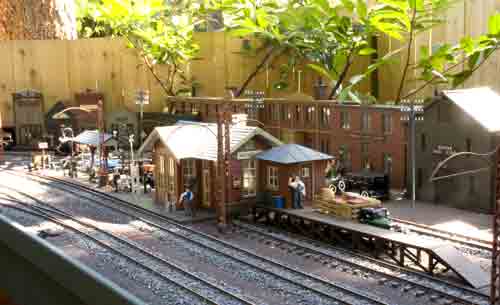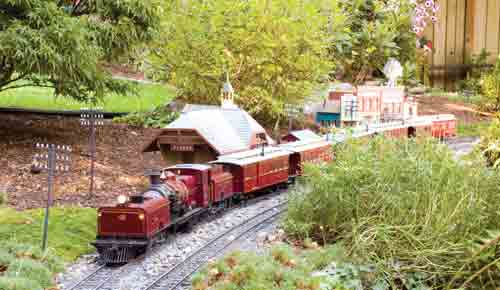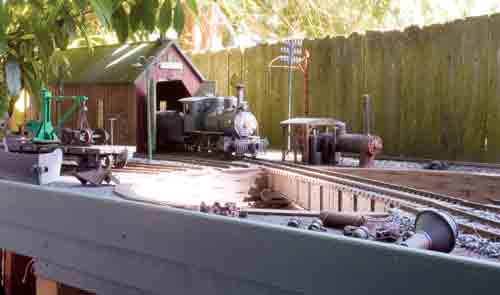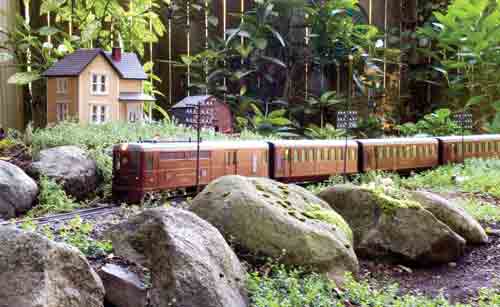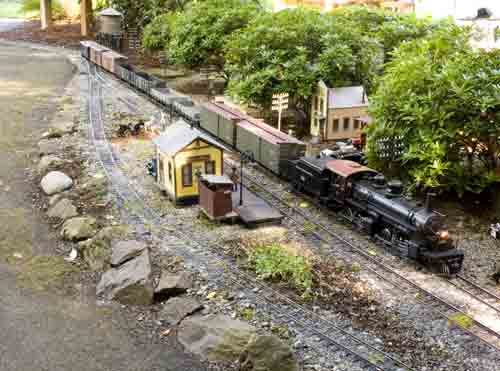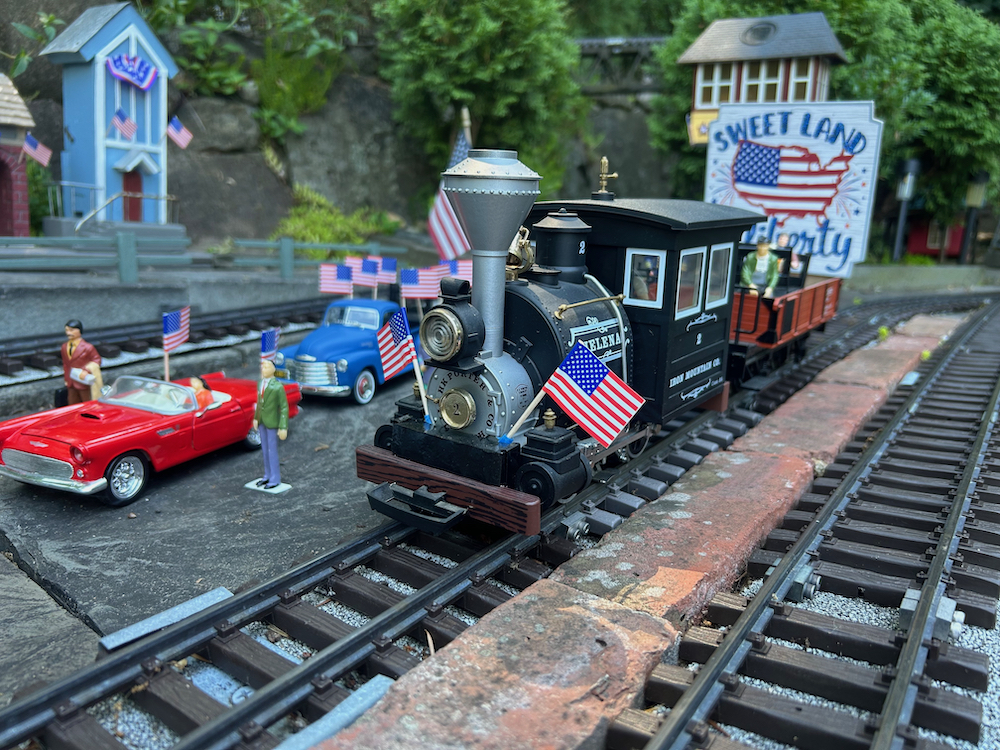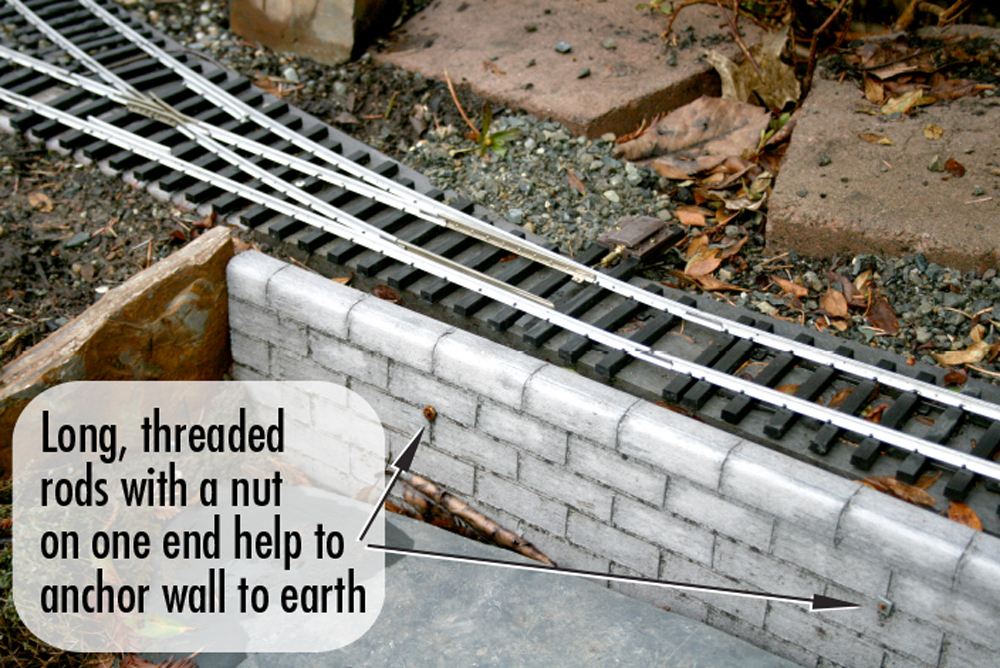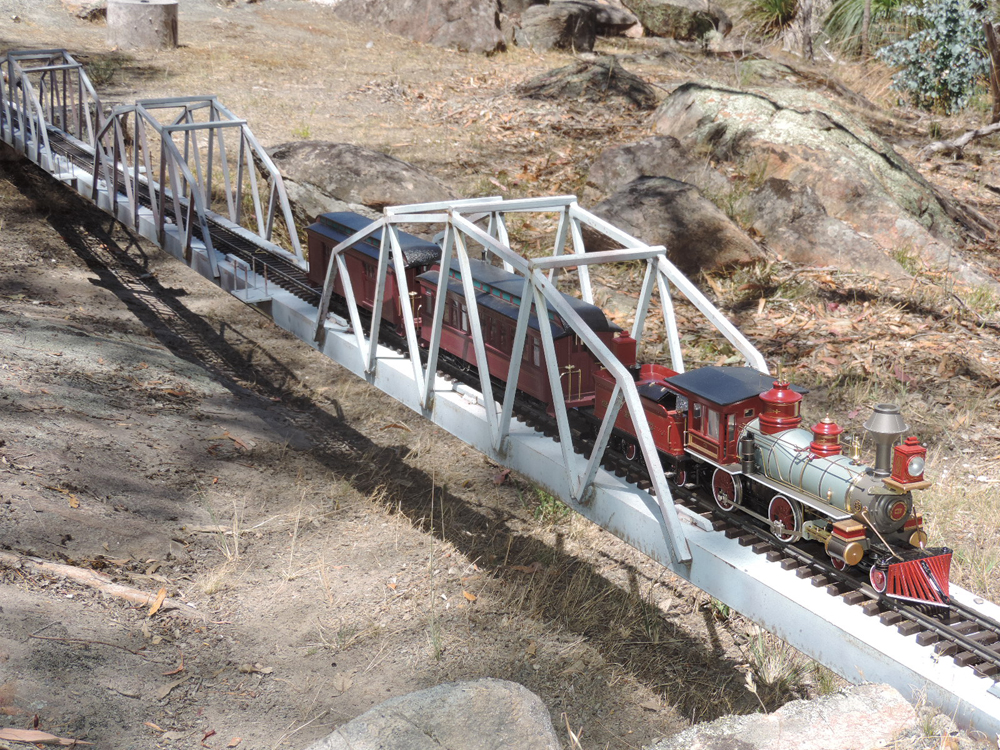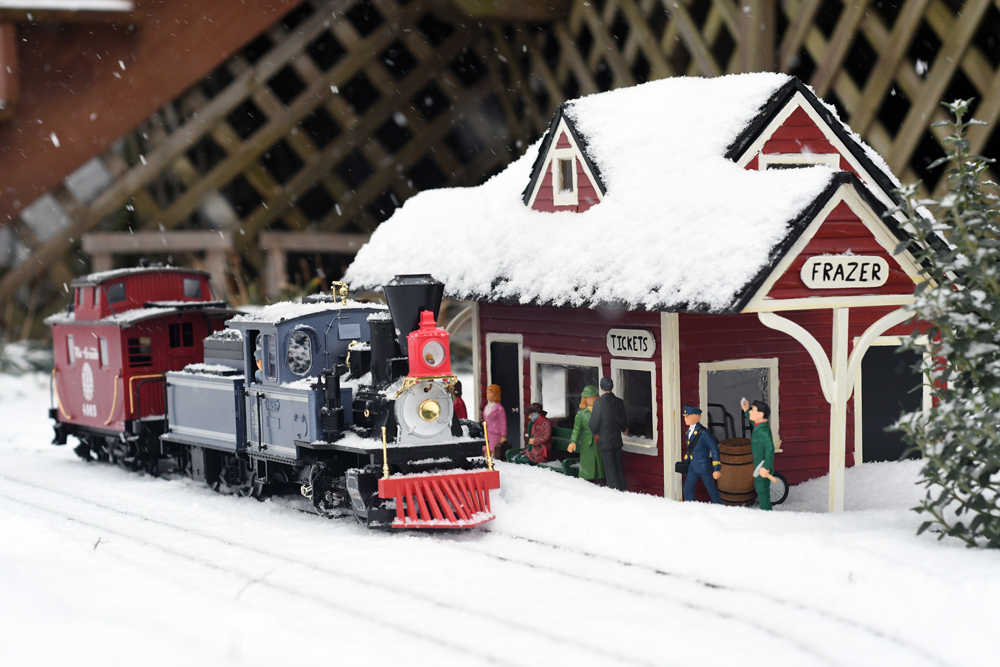The railway at a glance
Railway name: Dunckley Northern Railway (DNR)
Size of railroad: Covering an odd shaped garden approximately 70′ x 70′
Scale: 1:24
Gauge: 45mm for 3’6″ gauge and 64mm for standard gauge
Era: Late 1930s
Theme: The DNR is a Colonial railway in an undisclosed country. The Consolidated Concentrates Conglomerate (CCC) branch is owned by a US mining company and connects the DNR to its standard-gauge parent, The Mason Alameda & Dunckley Railroad Navigation & Drayage Company (MA&DR).
Age: 14 years
Motive power: Scratchbuilt and kitbashed steam, diesels, and railcars
Length of mainline: Approximately 900′
Maximum gradient: 4%
Type of track: Llagas Creek code 250 for the 3’6″ gauge; handlaid dual gauge.
Minimum radius: 6′
Structures: Scratchbuilt, kitbashed, and kit-built
Control system: RCS radio control of battery-powered locomotives





